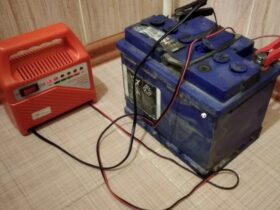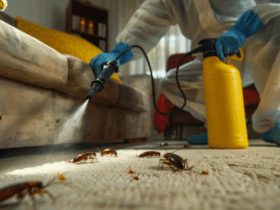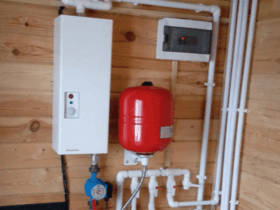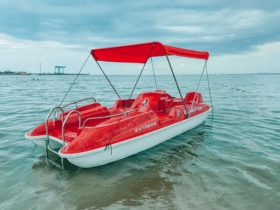A correctly selected stainless pipe for a chimney will last a long time. For the arrangement of the chimney, several more types of pipes are used, about the device of which we will talk.
Asbestos pipe for the chimney — is it possible to put it?
Ceramic pipe testing video for chimney
First, let’s talk about asbestos -cement pipes, which until recently were very widely used to arrange chimneys. The reasons for this are very simple — they are cheap (a four -meter pipe with a diameter of 100 mm will cost no more than four hundred rubles), and do not burn out.
However, most modern builders have a different opinion about the use of an asbestos -cement pipe. Firstly, high temperatures are contraindicated to such pipes, since they entail the destruction of asbestos cement, in some cases accompanied by the explosion. Secondly, the uneven inner surface of the pipes leads to rapid accumulation on the walls of soot, which leads to a deterioration in the chimney thrust. In addition, soot tends to quickly ignite, which again leads to an unacceptable increase in temperature for asbestos cement. It is very difficult to clean such pipes due to uneven walls, so the rapid accumulation of soot is inevitable.
However, modern heating boilers, the efficiency of which is much higher than those that were produced in Soviet times, are not able to create high temperatures in pipes. Therefore, it would seem that it is not scary to put asbestos pipes, because there is no probability of explosion. In fact, such pipes conceal another possible danger — the formation of condensate. Of course, the usual water condensate is not terrible for them, but the fact is that in this case it consists not at all of H2O, but of combustion products, including a certain number of caustic acids. These substances form on the walls, near which pipes and brick chimney are unaesthetic spots. But this is not the worst, because acid destroys not only the chimney from the asbestos -cement pipe, but also the brickwork itself.
Due to all these circumstances, as well as fire safety requirements, use these pipes to create chimneys is extremely not recommended.
Stainless pipe for the chimney and its properties
Video about the features and characteristics of the chimneys
Another option for creating a chimney is its construction of stainless pipes. It is most reasonable to use the so -called «sandwiches». Behind this edible name hides a design of two metal pipes of various diameters, inserted one into another, between which a special non -combustible insulation of high density is laid. There are three options:
Both stainless steel pipes;
the internal is made of stainless steel;
Both pipes from galvanizing.
The latter option is the least preferable, since the thickness of the galvanized sheet usually does not exceed 0.5 mm, which, of course, is not enough for the chimney. By the way, sometimes on sale you can find single galvanized pipes that are positioned as stoves. The galvanized pipes for the chimney in principle do not exist — such products are used to create water drainage systems from roofs or when creating air ducts. However, sometimes they are still used on gas boilers, but by and large it is forbidden to do this by construction standards.
Returning to the conversation about the «sandwiches», it is worth noting that the best option is the use of pipes completely made of stainless steel. The main thing in them is the thickness of the stainless metal from which an internal element is made; it should not be less than one millimeter. A somewhat more budget option with an outer tube from galvanizing is also not bad, but a white plaque appears on the metal, and its splendor is lost. Pipes for a chimney, stainless steel in which are used both inside and outside, last the longest, but also cost noticeably more than their galvanized “brothers”.
When buying a sandwich, you should pay attention to the location of the pipes relative to each other. The fact is that during installation one condition must be observed: the upper inner pipe should enter the lower, and the upper outer pipe should be worn on it.
The minimum diameter of the internal chimney pipe is 80 mm, it is not recommended to use less.
If you have knowledge about how to make a pipe for a chimney with your own hands, you can get to work yourself. However, it is still better to buy ready -made pipes from a trusted manufacturer — they will cost, of course, more expensive, but there will be no doubt about their reliability.
The installation of chimney pipes should also be carried out by experienced masters, who are primarily required to make all the necessary calculations and create an installation scheme. In addition, the chimney must be equipped according to SNiP and correspond to fire safety holes.












Оставить коммент.